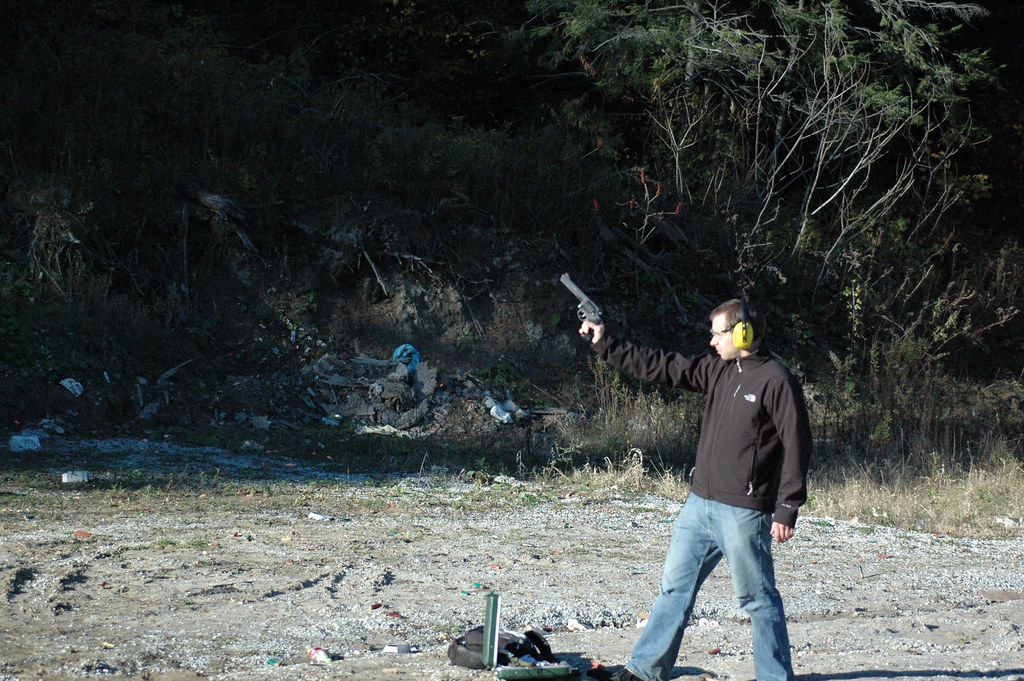
The world of handguns is as complex as it is fascinating, offering a plethora of types and models that cater to different needs, whether for defense, sport, or professional use. Amidst this variety, the basic classification boils down to a simple dichotomy: revolvers and pistols. Yet, the intricacies of each type reveal a rich tapestry of engineering and design that enthusiasts and experts alike appreciate.

Handguns have been a staple of personal armament for over 700 years, with the Chinese ‘hand cannon’ and the 19th-century Colt revolver underscoring a long history of development.

By the 20th century, technological advancements had produced the semi-automatic pistol, an innovation that automated the chambering of rounds and revolutionized handgun use.

A semi-automatic pistol, distinct for having the chamber integral to its barrel, can fire a round with each trigger pull without manual action to cycle the ammunition. Its capacity varies, with some holding as few as six rounds and others boasting more than 20.

The Glock, for instance, has become almost synonymous with this category, offering high-capacity magazines and ease of maintenance.

For those seeking historical flair or specific applications, the Thompson Center Contender and the classic derringer offer break-action enjoyment, with the former being ideal for hunting due to its rifle cartridge chambering. Derringers, on the other hand, lean toward concealment and self-defense with their compact design.

The distinction between single and double-action firing modes adds another layer to handgun selection. Revolvers and some semi-automatics fall under this distinction, with single-action requiring manual hammer cocking, and double-action performing both cocking and firing through the trigger pull. The nuances of these actions cater to preferences in trigger sensitivity and firing speed.

Striker-fired handguns, on the other hand, eschew the traditional hammer in favor of a spring-loaded striker. This design simplifies the firing mechanism, often resulting in a consistent trigger pull, which is a boon for precision shooting.

It’s a feature that’s become popular in models intended for self-defense and law enforcement. Legislation and regulation sometimes impact gun ownership and use, as seen in the scrutiny over arm braces for handguns.

Initially designed to assist one-handed shooting of heavy handguns, arm braces have been caught in a legal tug-of-war concerning their classification as components of short-barreled rifles, subject to stringent regulation under the National Firearms Act.

Curiosity about handguns often extends to their cartridges and caliber, with a range that includes the .22 LR, suitable for target shooting, to the powerful .357 Magnum, which is favored for self-defense and hunting.

Each caliber offers different attributes in terms of recoil, velocity, and stopping power, allowing users to tailor their choice to their specific needs.

In choosing a handgun, potential owners must weigh factors such as purpose, comfort, size, and caliber, as well as budgetary constraints.

For our audience of military tech and politics enthusiasts, the consideration extends to the firearm’s historical significance, technological sophistication, and strategic advantage.

While some pursue handguns for sport, others may see them as a tool for defense or a collector’s item with historical gravity. The handgun’s role in military history, law enforcement, and personal defense cannot be overstated, with its evolution mirroring advancements in technology and changes in tactical thinking.
Relevant articles:
– Types of Handguns: A Complete Guide, Field & Stream
– Types of Pistols: A Guide for Beginners, Outdoor Life
– Types of Pistols: A Complete Guide, Field & Stream
– What Are The Types of Handguns, laws.com

